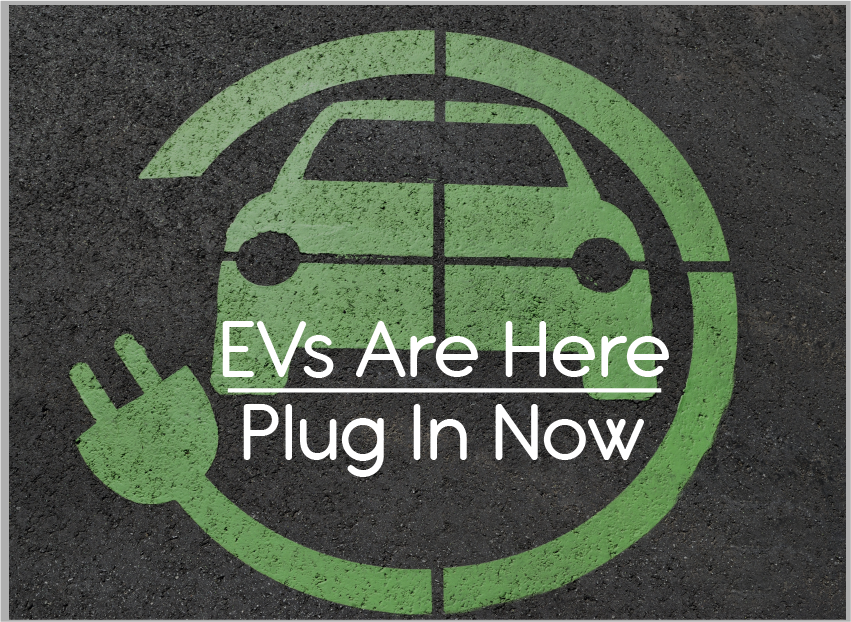Almost every media piece about EVs, friendly and FUD (Fear, Uncertainty, Doubt) alike, states that EVs cost more than internal combustion vehicles (ICVs). But saying it doesn’t make it so. In fact, EVs are competitively priced today, and will only become more so as production volumes increase over time. If that’s true, why do so many people claim otherwise?
The Law of Averages
There’s plenty of sophistry out there. But even honest commentators get tripped up by comparing the price of the average EV to the price of the average ICV. Over half of the EVs being sold in the U.S. right now are Teslas, which are higher-end luxury cars. So today’s “average” EV is comparable to a well-equipped BMW or Lexus, while the average ICV is a mid-spec Honda or Ford. Not exactly apples to apples.
If You Have to Ask the Price….
The reality is that all new cars (EVs and ICVs alike) are expensive. The average new car costs $38,723, and the average new EV costs $42,620. Given the number of Teslas in the EV mix, it should be obvious that there are plenty of affordable EVs on the market, even before we consider the federal tax credit.
Used EVs are the deal of the century right now and the key to mass market adoption is a strong used EV market. You can buy cream puff, low-mileage used EVs, still under warranty, for under $10,000. Due to the tax credits on new EVs, unfounded pessimism about battery life, and unrealistic optimism about future battery improvements, used EVs are priced drastically lower than comparable used ICVs. New car depreciation is one of the few places in society where trickle-down economics actually works as touted. It’s a feature, not a bug. And, except with Teslas (which hold their value better than almost any other cars on the road), it’s working pretty well with EVs. In ten years, you’ll be able to buy a rusty EV with bald tires for $500, just like ICV beaters today.
And, when you consider the total cost of ownership (that is, the fueling and maintenance costs over the life of the vehicle in addition to the purchase price and/or relevant tax credits), EVs beat their ICV competitors, hands down.
The EV (“Excellent Vehicle”) Option
Motor Trend recently did a nice comparison of the gasoline and electric versions of the Hyundai Kona. But even Motor Trend’s fair-minded, knowledgeable reviewers fell victim to a common fallacy: they insisted on comparing a $28,980 baseline gas version with modest options to the $46,630 premium EV version, on the premise that the trim levels were comparable. In doing so, they failed to recognize that electric drive (an electric motor) is a “trim” choice, too. Their error is akin to criticizing a Subaru for costing $10,000 more than a Ford Focus, ignoring the market value of the Subaru’s main selling point (all wheel drive). In their defense, the writers did note that the base Kona EV carries only a $2,495 premium over the gas model, once the $7,500 federal EV tax credit is considered. Given its significantly reduced operating costs and far more refined (quieter, smoother, cleaner) operation, most buyers would consider the EV option a bargain at that price.
[Motor Trend’s writers also made a significant error in judgment concerning DC fast charging, which I covered in an earlier post. They also acknowledged that error in the article, though not as prominently as was warranted.]
A (Temporarily) Taxing Situation
About that federal tax credit: Detractors love to mischaracterize the EV tax credit as a subsidy for rich people. But it’s actually an incentive to help auto manufacturers start developing EVs, not a giveaway to their well-heeled customers. Manufacturers are expert at setting and adjusting sticker prices, rebates, financing, and other variables to maximize their profits. Dealers are equally adept at picking customers’ pockets, using a ruse called the “four square” to shuffle prices, trade-ins, monthly payments, and down payments in an elaborate shell game. As far as they’re concerned, the tax credit is just one more shell in that game.
The federal tax credit has always been temporary, with a sunset period starting once a manufacturer sells 200,000 EVs. It’s instructive to consider the two manufacturers whose credits have fully expired (Tesla after December 2019, General Motors after March 2020). Tesla made minor price and equipment adjustments, but avoided major price reductions by increasing exports into new markets. GM slapped large rebates on the Bolt. Neither company loses money by continuing to sell EVs at the prices they can command without the subsidy.
The Future is Today
EVs aren’t the future; they’re viable, available, and affordable today. Plug-in models are sold in most vehicle categories: sedans, hatchbacks, SUVs, minivans, and motorcycles. The only major exception is pickup trucks, and electric pickups are close enough to market that you should just nurse your old ICV truck along for another year or so, instead of locking in another 20 years of petroleum consumption by buying a new one.
If you really care about the environment, energy security, and human rights, tune out the misinformation spread by dishonest shills and the unwitting parrots who aid and abet them. Make sure your next vehicle has a plug, and stop giving your money to oil and gas industry lobbyists.
“Cowardice asks the question, ‘Is it safe?’ Expediency asks the question, ‘Is it politic?’ Vanity asks the question, ‘Is it popular?’ But, conscience asks the question, ‘Is it right?’ And there comes a time when one must take a position that is neither safe, nor politic, nor popular but one must take it because one’s conscience tells one that it is right.” Martin Luther King, Jr.
[button color=”blue” url=”https://cleanenergy.org/?s=EVsHerePlugInNow”]Read “EVs are Here, Plug In Now” Blog Series [/button]

#EVsHerePlugInNow


